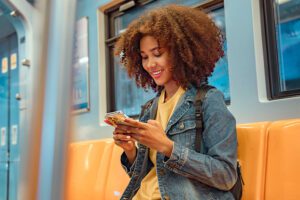With advertising noise louder than ever, especially in the food, beverage and tourism industries, brands are getting bolder to break through. This increased pressure combined with the rise of social media has changed the game for creative marketing. Now, authenticity, humor and unpredictability are starting to matter more than polish or perfection.
Enter chaos marketing—a strategy built on creative disruption that’s helping brands like Wendy’s, Liquid Death and Ryanair go viral, cut through the clutter and build cultural relevance.
What is Chaos Marketing?
Chaos marketing isn’t about abandoning strategy; it’s actually a strategy in and of itself. It’s a deliberate use of unpredictability, offbeat humor and platform-native content to grab attention and spark engagement. Successful brands achieve this by:
- Speaking like real people, not corporations. They ditch corporate jargon for conversational, authentic language that feels natural in comments and DMs.
- Playing with absurd humor and meme formats. They embrace internet culture, using trending sounds, viral formats and inside jokes that resonate with their audience.
- Breaking the fourth wall. They acknowledge the platform they’re on, mock themselves or directly address their audience as if having a casual conversation.
- Posting raw, spontaneous content. They share deliberately “low-fi” content that feels unpolished but intentional—creating the impression of spontaneity while maintaining strategic direction.
From Old Spice to Internet Chaos
While chaos marketing feels like a product of TikTok culture, its DNA traces back to early 2010s disruptors—most notably, Old Spice.
Old Spice’s “The Man Your Man Could Smell Like” campaign featured bizarre, rapid-fire storytelling with Isaiah Mustafa, broke the fourth wall and leaned into complete absurdism. It went viral before TikTok existed, proving humor and unpredictability could drive brand relevance and elevate Old Spice from a forgotten dad brand to a cultural icon.
Old Spice showed that weird works, as long as it’s strategic and self-aware. It paved the way for today’s chaos-forward social strategies that win in food, beverage and hospitality marketing.
Food and Beverage Brands Leading the Chaos
Fast food giant Wendy’s social media channels are a classic example of chaos marketing. One of its most notable chaotic moments was #NationalRoastDay, first launched on Twitter (X) in 2018. Wendy’s invited followers to ask for roasts and proceeded to deliver savage, witty replies in real time. They roasted fans and competitors alike, using pop culture references and authentic banter that made the brand feel cool and relatable.

Wendy’s #NationalRoastDay skyrocketed engagement, boosted brand perception among Gen Z and Millennials, and earned industry awards for best-in-class social media marketing.
In the world of consumer packaged goods, canned water and beverage company Liquid Death built a $1.4 billion brand through a heavy-metal-inspired ethos, viral stunts and irreverent humor. Their “Sell Your Soul” campaigns, limited-edition merch (including a skateboard inked with Tony Hawk’s blood) and aggressively framed eco-activism created shock value while maintaining an anti-corporate tone.
Offbeat Marketing Approaches in Travel and Tourism
Ultra low-cost airline Ryanair’s viral social media presence took off when their Twitter and TikTok accounts embraced a bold, self-deprecating and hilariously sarcastic tone. Tactics like roasting passengers’ travel habits, poking fun at other airlines (and even themselves) and turning photos of planes into quirky characters have captured attention worldwide.

Ryanair’s chaotic strategy has paid off—the brand’s TikTok account boasts millions of followers, with engagement levels consistently outpacing other airlines.
Why Chaos Marketing Works
It’s clear that chaos marketing is creating a major impact for the right brands—but what makes it so effective?
- Relatability over perfection. Audiences engage more with content that feels authentic and surprising rather than polished corporate messaging.
- Parasocial dynamics. When brands adopt distinct personas, audiences form meaningful emotional connections—similar to relationships with influencers or entertainers.
- Culture-first content wins. Algorithms favor high watch time and shares. Chaos marketing generates both through humor, tension and unpredictability.
- It invites participation. When brands roast followers or repost memes, audiences become part of the performance. Engagement becomes content itself.
Should Your Food, Beverage or Travel Brand Try This?
A controlled dose of chaos can loosen rigid brand voices, break through social fatigue and make your brand genuinely fun to follow. Use these tips to experiment without completely derailing your brand.
- Start small. Pilot a “weird Wednesdays” series on TikTok, give your mascot its own persona or test looser language in Instagram Stories.
- Create tone boundaries. Remember that “playful” doesn’t mean “offensive” and “unhinged” doesn’t mean “incoherent.” Use internal guidelines like: “Would our audience send this to a friend?”
- Let your audience guide you. Monitor reactions, comments and DMs. Double down on what resonates, drop what doesn’t, and treat social media like a conversation rather than a campaign.
Let’s Embrace Strategic Chaos Together
Not all brands need to go into all-out gremlin mode to build a memorable experience—but finding a tone that feels fresh, human and culturally relevant matters more than ever.
Whether you’re looking to dial up your humor, discover your authentic voice or test creative approaches that actually stick, contact David Melnick to get started.
Sources:
“Case Study: Wendy’s Social Media Success with the ‘Roast’ Campaign,” LibreTexts.
“Liquid Death Marketing Breakdown: How They Became a Billion-Dollar Brand,” OptiMonk, July 2024.
“Ryanair’s Head of Social on TikTok, Twitter and Flying up the Ranks of Online Marketing,” Marketing/Beat, January 2023.
